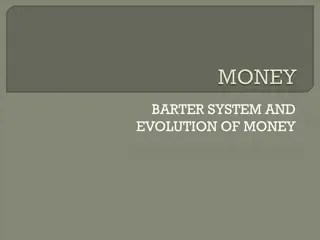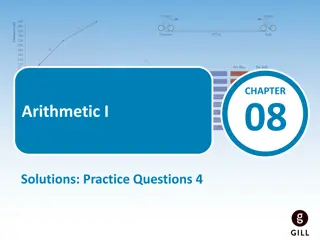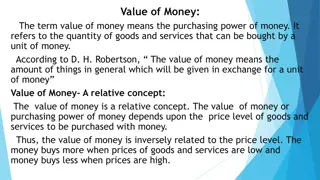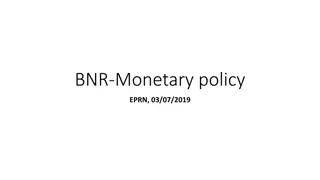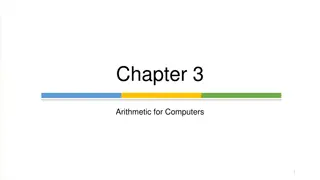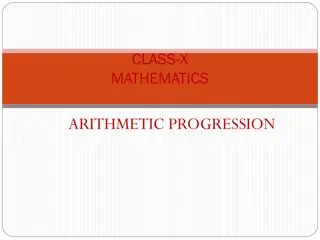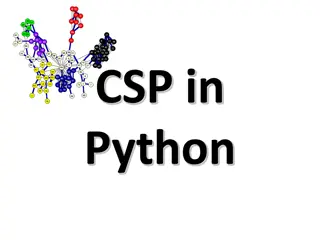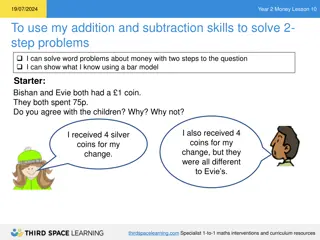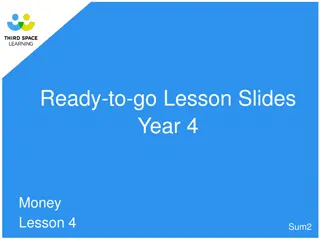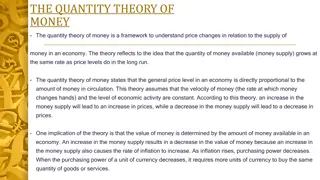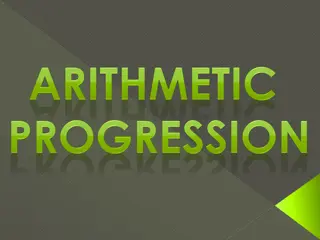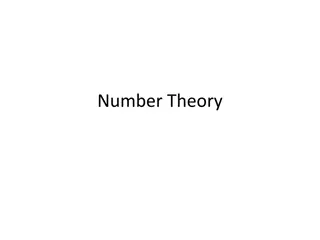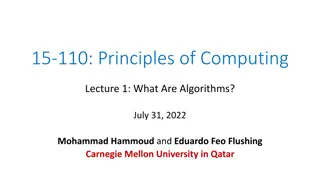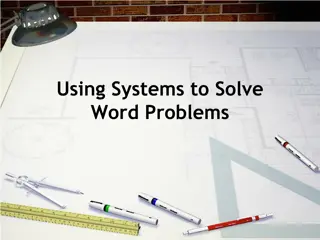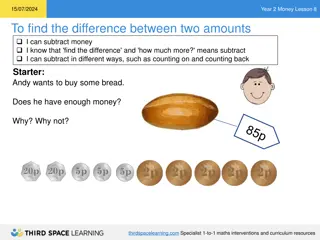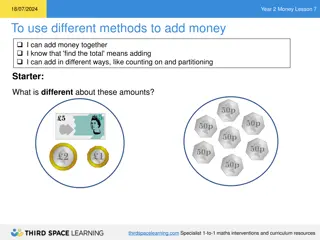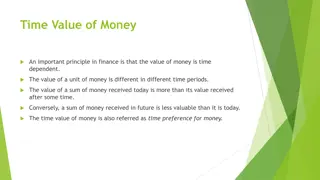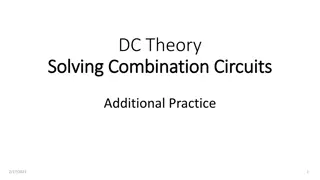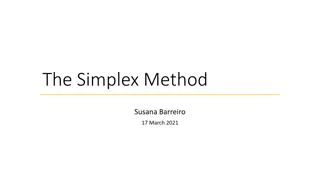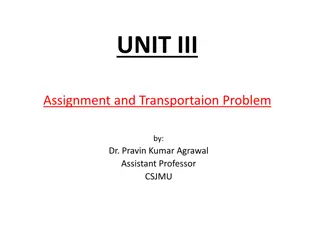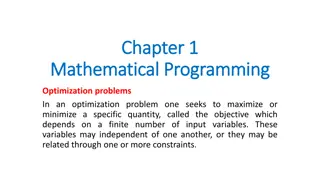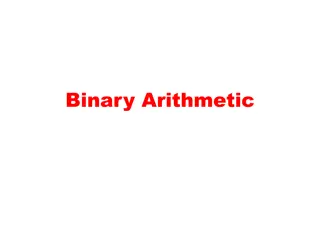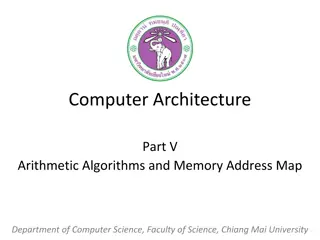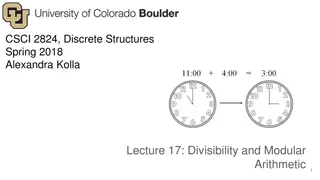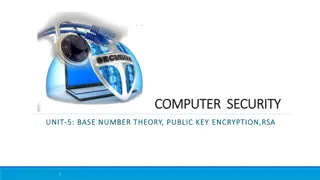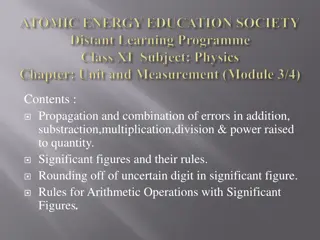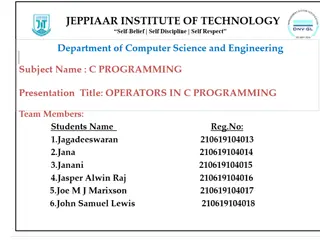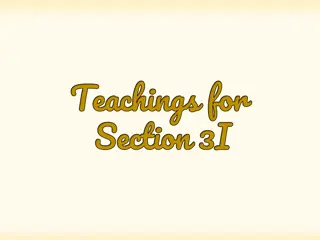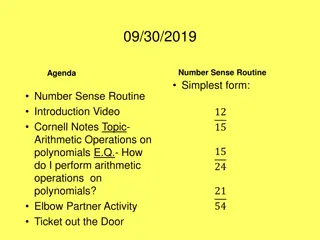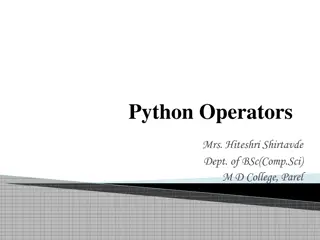Solving Money Problems with Arithmetic
This chapter focuses on applied arithmetic concepts such as calculating mark-up, margin, compound interest, income tax, and net pay. It covers topics like percentages, income, deductions, and income tax rates in Ireland. Detailed examples on calculating tax payable, deductions, and net pay are provided to enhance understanding of practical financial calculations.
Download Presentation

Please find below an Image/Link to download the presentation.
The content on the website is provided AS IS for your information and personal use only. It may not be sold, licensed, or shared on other websites without obtaining consent from the author. Download presentation by click this link. If you encounter any issues during the download, it is possible that the publisher has removed the file from their server.
E N D
Presentation Transcript
10 Chapter 10: Applied Arithmetic Learning Outcomes Solve money problems involving: Mark up (profit as a % of cost price) Margin (profit as a % of selling price) Compound interest Income tax and net pay (including other deductions) 1 ACTIVE MATHS 2
Review: Revision of material from Active Maths 1 10 1. Percentages: Calculating percentages. Find 20% of 500 20% of 500 = 0.2 x 500 = 100 2. Percentage Increase/Decrease: Percentage increase/decrease = Increase/Decrease Original number 100 1 John spent 11.25 on a calculator last year. His friend Thomas spent 14.50 on the same calculator this year. Find, correct to two decimal places, the percentage increase in the price of the calculator. Increase in price of calculator: 14.50 11.25 = 3.25 Increase Original Number 100 Percentage increase = 1 Percentage increase = 3.25 11.25 100 1=28.89% 2 ACTIVE MATHS 2
Income and Deductions 10 Gross pay or gross income is money earned before deductions are made. Net pay or net income or take-home pay is money received after all deductions have been made. Statutory deductions are payments that must be made to the state. Non-statutory deductions are those which employees make voluntarily, such as health insurance, union fees, etc. 3 ACTIVE MATHS 2
Income Tax 10 There are two rates of income tax in Ireland. The lower rate is called the standard rate of tax. The higher rate is called the higher rate of tax. Gross tax is the amount of tax owed to the state before tax credits are deducted. The tax credit is a sum deducted from the gross tax a taxpayer owes to the state. Tax payable = Gross tax Tax credit The rates for the universal social charge (USC) are as follows: Zero, if total income is 13,000 or less For people with an income of above 13,000, the rates will be: 4 ACTIVE MATHS 2
Income Tax 10 Albert earns 27,000 a year. He pays tax at a rate of 20%. He has instructed his employer to pay his annual health insurance premium of 550 directly from his salary. He pays no other deductions. He has a tax credit of 1,950. Find Albert s: (a) Tax payable (b) Total deductions (c) Net pay Solution (a) Gross tax = 27,000 20% = 27,000 0.2 = 5,400 Tax payable = gross tax tax credit = 5,400 1,950 = 3,450 (b) Total deductions = tax payable + health insurance = 3,450 + 550 = 4,000 (c) Net pay = gross pay total deductions = 27,000 4,000 = 23,000 5 ACTIVE MATHS 2
Income Tax 10 The standard rate of income tax is 20% and the higher rate is 40%. The standard rate cut- off point is 32,800. Sandra has a gross income of 47,500 and total tax credits of 2,450. Calculate Sandra s net income (ignore PRSI and USC). Standard tax = 32,800 20% = 32,800 0.2 = 6,560 Income liable for higher tax = 47,500 32,800 = 14,700 Higher tax = 14,700 40% = 14,700 0.40 = 5,880 Gross tax = standard tax + higher tax = 6,560 + 5,880 = 12,440 Tax payable = gross tax tax credit = 12,440 2,450 = 9,990 Net pay = gross pay tax payable = 47,500 9,990 = 37,510 6 ACTIVE MATHS 2
USC 10 Sanabel earns 50,000 per annum. Calculate the amount that will be deducted from her annual pay for the universal social charge. Step 1: Break the salary down into the various threshold amounts. 12,012 @ 0.5% 7,360 @ 2% 50,000 12,012 7,360 = 30,628 @ 4.75% Step 2: Calculate the percentages 12,012 @ 0.5% = 12,012 x 0.005 = 60.06 7,360 @ 2% = 7,360 x 0.02 = 147.20 30,628 @ 4.75% = 30,628 x 0.0475 = 1,454.83 The total USC = 60.06 + 147.20 + 1,454.83 = 1,662.09 7 ACTIVE MATHS 2
PRSI 10 Chloe earns 650 per week. She is in Class A1 for PRSI, which has the following rates: Calculate: (a) Her PRSI payment this week (b) Her employer s PRSI payment this week (c) The total amount of PRSI that will be paid this week (a) 650 4% = 26 Chloe s PRSI payment is 26. (b) 650 0.1075 = 69.875 69.88 The PRSI payment by Chloe s employer is approximately 69.88. (c) Total PRSI payment = 26 + 69.88 = 95.88 8 ACTIVE MATHS 2
Percentage Profit and Loss 10 If a product or service is sold for more than it cost to buy or produce, then the seller has made a profit. If a product or service is sold for less than it cost to buy or produce, then the seller has made a loss. If profit (loss) is made, the selling price is the cost price plus (minus) the profit (loss). The percentage profit mark-up is the profit expressed as a percentage of the cost price: ?????? ???? ????? ??? Percentage profit mark-up = The percentage profit margin is the profit expressed as a percentage of the selling price: ?????? ??????? ????? ??? Percentage profit margin = 9 ACTIVE MATHS 2
Percentage Profit and Loss 10 Nick buys a DVD box set for 75 from an online retailer. He then sells it for 100. Find: (a) The cost price (b) The selling price (c) The profit made (d) The percentage mark-up (e) The percentage margin. (a) Cost price = 75 (the price Nick paid) (b) Selling price = 100 (the price Nick sells for) (c) Profit = selling price cost price = 100 75 = 25 Profit Cost ?rice 100 = 25 75 100 = 331 3% (d) Percentage mark-up = Selling ?rice 100 = 25 Profit 100 100 = 25% (e) Percentage margin = 10 ACTIVE MATHS 2
Compound Interest 10 If you borrow money from a bank or financial institution they will also charge you for the use of the money they loaned you. This is called interest payable. When you invest money with a financial institution, they have to pay you a charge for the use of this money. This is called investment interest. When a loan or an investment is paid back in full, the total amount is the sum borrowed or invested plus the interest that was paid. When dealing with interest, we use the following symbols: F = Final value (amount borrowed or invested + interest) P = Principal (amount borrowed or invested) i = Rate of interest per annum (year) (always use decimal form) t = Time (usually in years) This is a formula to be used when the interest rate remains unchanged. ? = ?(1 + ?)? Page 30 of Formulae and Tables. 11 ACTIVE MATHS 2
Compound Interest 10 Niall borrows 100 for six years at rate of 2% compounded annually. How much interest will he pay on the loan? ? = ?(1 + ?)? ? = 100 ? = 2% = 0.02 ? = 6 (years) ? = 100(1 + 0.02)6 = 100(1.02)6 112.62 Interest = final value principal = 112.62 100 = 12.62 12 ACTIVE MATHS 2




